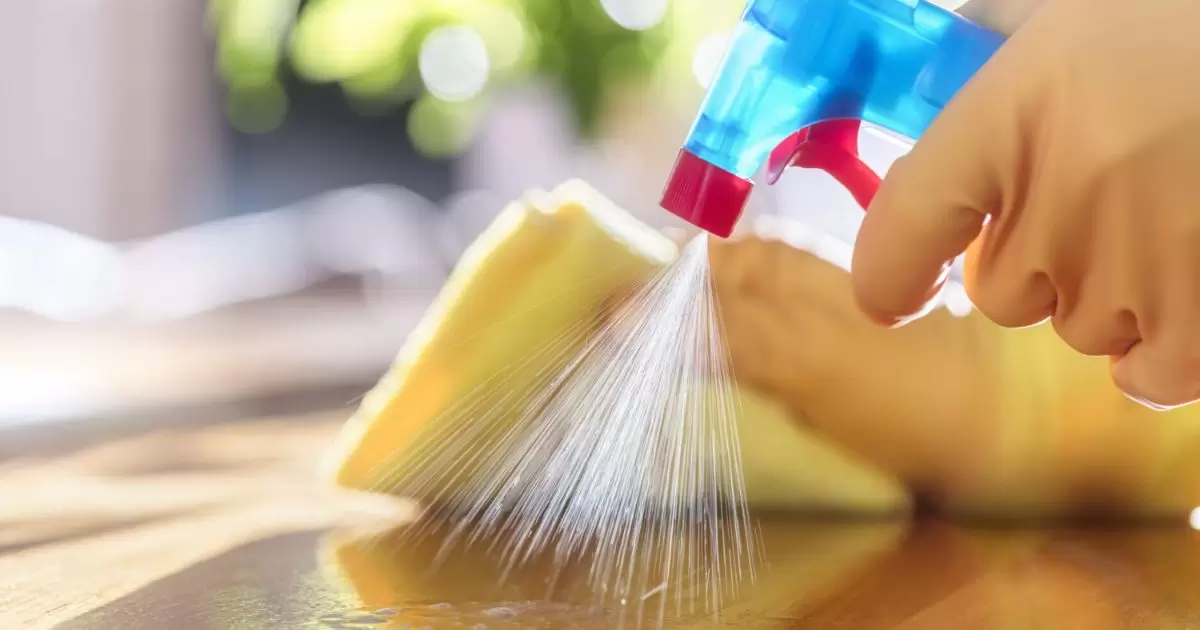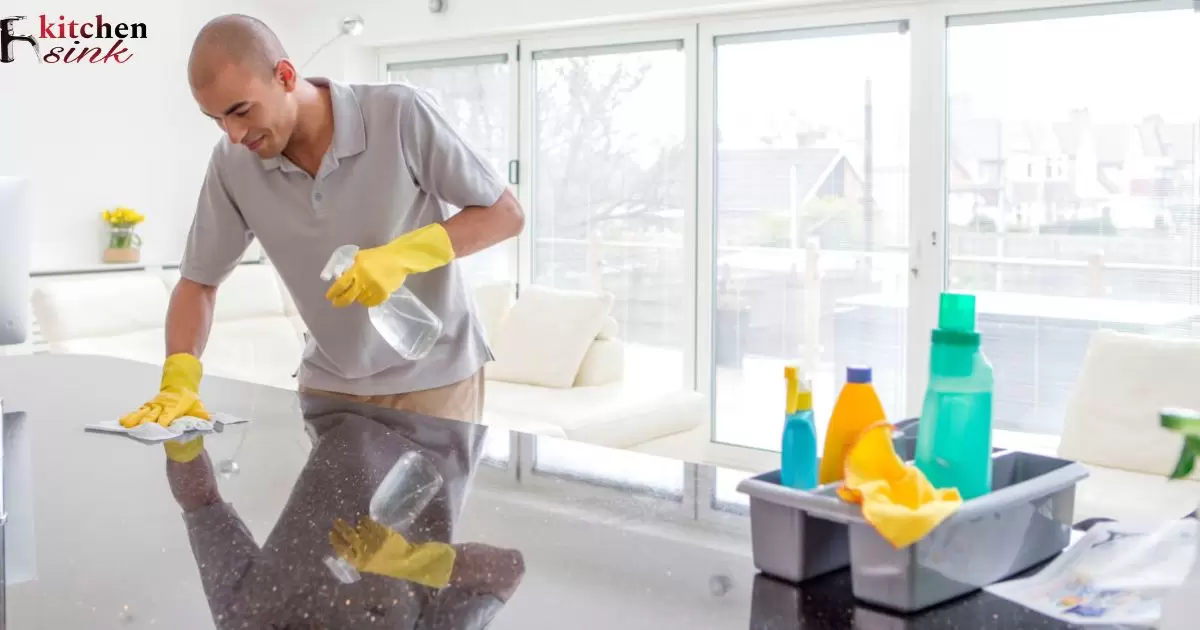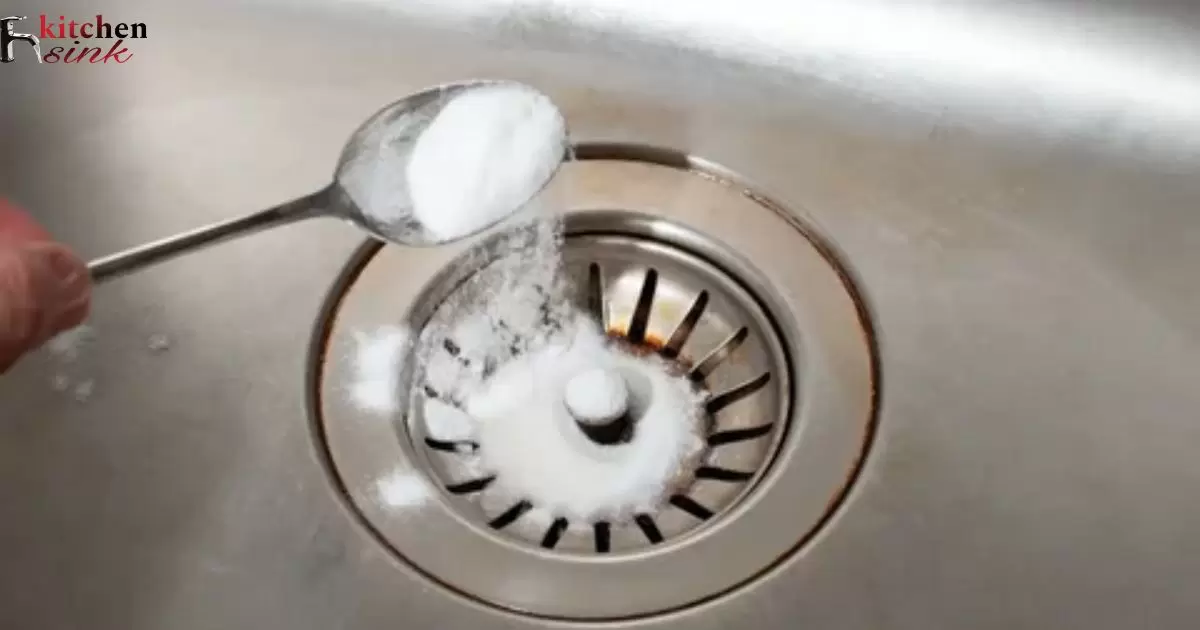Disinfecting a kitchen sink without bleach involves using alternative disinfectants that can sanitize and kill germs effectively. Common options include vinegar, hydrogen peroxide, rubbing alcohol, tea tree oil, and lemon juice. These products work to break down bacteria, viruses, and grime when applied correctly in the sink basin. Proper disinfection helps maintain good hygiene and prevent illness.
How To Disinfect Kitchen Sink Without Bleach? Many people want to disinfect their kitchen sink regularly to prevent the spread of germs and bacteria that can cause illnesses. However, harsh chemical bleach solutions come with safety and environmental concerns. The good news is there are alternative ways to effectively clean and disinfect a kitchen sink without relying on bleach products.
Seeking natural and safe methods to disinfect a kitchen sink is understandable for health and environmental reasons. Simple homemade solutions using common household ingredients can sanitize as effectively as bleach when used properly. For example, combinations of vinegar, hydrogen peroxide, alcohol, essential oils, and citrus juices help break down and kill pathogens. Regular cleaning with these bleach-free alternatives keeps the kitchen sink free of harmful microbes.
Disinfect Your Kitchen Sink
The kitchen sink is one of the dirtiest places in the home. It accumulates food particles, germs, and bacteria that can cause illness. Regular cleaning alone does not kill all these germs. Disinfecting the sink helps sanitize it and prevent the spread of bacteria and viruses to hands, dishes, and food prepared in the sink.
Benefits Of Disinfecting Your Kitchen Sink
5 easy short benefits of disinfecting your kitchen sink:
- Kills germs
- Prevents spread of bacteria
- Reduces risk of foodborne illness
- Eliminates odors
- Keeps sink looking clean
Happens If You Don’t Disinfect Your Kitchen Sink
Without disinfection, germs can survive and multiply in the moist environment of the sink. Food particles allow bacteria colonies to thrive. Family members can easily pick up these germs on hands and contaminate other surfaces or food, causing stomach infections. Germs from raw meat juices can also spread and cause food poisoning.
Types Of Germs Live In An Unclean Kitchen Sink
All types of dangerous illness-causing bacteria, viruses, parasites, and fungi can live in an unclean sink including E. coli, Salmonella, Listeria, norovirus, Campylobacter, Giardia, Cryptosporidium, mold, and mildew. These can cause severe vomiting, diarrhea, fever, and even hospitalization.
Should You Disinfect Your Kitchen Sink
Experts recommend disinfecting the kitchen sink at least once a week. However, disinfect daily or every time you use the sink for handling raw meat, eggs, or contaminated dishes. Bleach solutions, hydrogen peroxide, vinegar, antibacterial dish soap or commercial disinfecting products help sanitize the sink regularly. If you notice your kitchen sink draining slowly even after cleaning, you may have an airlock in the drain pipes. This prevents proper water flow and drainage. Trying methods like plunging vigorously, using a drain snake to clear debris, or installing a cheater vent can help fix airlock in kitchen sink drain issues. Proper drainage helps keep the sink clean and free of standing contaminated water where bacteria can grow.
Household Cleaners Can Disinfect A Kitchen Sink Without Bleach
Vinegar, rubbing alcohol, hydrogen peroxide, and essential oils like tea tree oil can all be used to disinfect a kitchen sink without bleach. Vinegar solutions, rubbing alcohol, and hydrogen peroxide all have antimicrobial properties that can kill germs. Tea tree oil also has antimicrobial effects. Mixing these with water and using them to clean the sink can disinfect without harsh bleach.
Vinegar Effective For Disinfecting A Kitchen Sink?
Vinegar is an effective disinfectant for kitchen sinks. Vinegar has antimicrobial properties that allow it to kill bacteria, viruses, and other germs. Mixing equal parts vinegar and water and using it to scrub the sink can sanitize the area. Vinegar solutions have been shown in studies to eliminate common pathogens found in kitchen environments.
Rubbing Alcohol Disinfect A Kitchen Sink
Rubbing alcohol can be used to disinfect a kitchen sink. Mixing rubbing alcohol with water creates a solution that can kill germs through its antimicrobial properties. Rubbing alcohol solutions between 60-90% alcohol work best for disinfection. The alcohol penetrates and destroys cell walls and membranes of pathogens.
Hydrogen Peroxide For Kitchen Sink Disinfection
Hydrogen peroxide can also disinfect kitchen sinks. At higher concentrations between 3-10%, hydrogen peroxide solutions display strong antimicrobial abilities against viruses, bacteria, and fungi. Spraying hydrogen peroxide on the sink, letting it sit for 10 minutes, and then rinsing can sanitize the area by killing germs.
Natural Cleaners Like Tea Tree Oil Clean A Kitchen Sink
Tea tree oil has natural antimicrobial abilities, so it can disinfect kitchen sinks. Mixing a few drops into water and dish soap allows the oil to penetrate grime and kill germs. Tea tree oil disrupts cell membranes and destroys proteins in pathogens. When combined with dish soap, it cleans dirty sinks while disinfecting them.
Clean Your Kitchen Sink With Baking Soda
To clean a kitchen sink with baking soda, first rinse out the sink then sprinkle baking soda liberally over the entire surface. Use a damp sponge or cloth to gently buff the baking soda into the sink, scrubbing in a circular motion. Make sure to scrub every inch. Then spray or pour white vinegar over the baking soda and let it sit for 5-10 minutes before rinsing thoroughly with warm water. Wipe dry with a clean cloth.
Baking Soda And Water Ratio For Cleaning A Kitchen Sink
An effective baking soda and water ratio for cleaning kitchen sinks is to use 3 parts baking soda to 1 part water. Mix the baking soda and water to form a thick paste. Apply the paste to the sink surface with a sponge or brush and let it sit for 5-10 minutes before scrubbing and rinsing clean. The paste helps the baking soda cling to vertical surfaces.
Baking Soda Disinfect Kitchen Sinks Effectively
Baking soda alone does not effectively disinfect kitchen sinks. While baking soda is a mild abrasive that can remove stains, it does not kill germs or bacteria. To properly disinfect a kitchen sink, cleaning with an antibacterial cleaner or bleach solution is recommended after first cleaning with baking soda.
Best Way To Apply Baking Soda To Disinfect A Kitchen Sink
Baking soda should not be used alone to disinfect kitchen sinks. An effective disinfecting process would be: first clean the sink with baking soda, water and scrubbing to remove grime and stains. Rinse thoroughly. Then spray or wipe down surfaces with an antibacterial cleaner containing bleach or other disinfecting agents. Allow to sit for contact time listed on product. Rinse again.
Should You Disinfect A Kitchen Sink With Baking Soda
Kitchen sinks should be thoroughly cleaned with baking soda weekly to remove stains and residue. For disinfecting, an antibacterial cleaner should be used on kitchen sinks more frequently – ideally daily or every other day. Baking soda alone does not disinfect, so should not be solely relied on for killing germs in a kitchen sink.
Using Lemon Juice To Disinfect Your Kitchen Sink
Lemon juice is an effective natural disinfectant for cleaning kitchen sinks due to its acidic properties. The citric acid in lemons helps kill bacteria, break down grime, and leave sinks fresh. Simply rub half a lemon around the sink, focusing on stained areas, then let sit for 30 minutes before rinsing.
Lemon Juice An Effective Kitchen Sink Disinfectant
Lemon juice contains citric acid and antibacterial properties that cut through grease and grime in kitchen sinks. The acidity helps remove limescale and mineral deposits while killing odor-causing bacteria. This makes lemon an affordable, non-toxic sink cleaner and disinfectant.
Proper Lemon Juice To Water Ratio For Cleaning Kitchen Sinks
The ideal lemon juice to water ratio for cleaning kitchen sinks is approximately 1:3. This dilutes the acidity while still allowing the lemon to cut through grime. Mix together 1 part lemon juice to 3 parts water in a spray bottle. Shake well and spray onto sinks before scrubbing and rinsing.
Long Should You Let Lemon Juice Sit In A Kitchen Sink When Disinfecting
When using lemon juice to disinfect kitchen sinks, let it sit for 30 minutes before rinsing. This gives the citric acid time to break down bacteria, soap scum, and stains. If you’re treating tough mineral deposits and limescale, let lemon juice sit for 1 hour before scrubbing and rinsing clean.
Rinse A Kitchen Sink After Using Lemon Juice To Disinfect
You should always rinse a kitchen sink thoroughly after using lemon juice to disinfect. While the acidity in lemons helps clean and sanitize sinks, letting it sit too long or not rinsing properly can damage sink materials over time. Rinse well with warm water to remove lemon residue.
Disinfecting A Kitchen Sink With Hydrogen Peroxide
Hydrogen peroxide can be an effective disinfectant for kitchen sinks. To use, pour undiluted 3% hydrogen peroxide directly into the sink, ensuring it covers the bottom and sides. Let it sit for a few minutes to allow the peroxide to kill bacteria, viruses, and other pathogens before rinsing thoroughly with warm water.
Hydrogen Peroxide Better Than Bleach For Disinfecting Kitchen Sinks
Hydrogen peroxide can be a good alternative to bleach for disinfecting most kitchen sinks. While bleach is a strong disinfectant, it can damage stainless steel over time. Hydrogen peroxide breaks down into water and oxygen, making it less harsh on sink materials. It is still an effective disinfectant capable of killing common germs.
Hydrogen Peroxide Concentration Works Best For Kitchen Sinks
The most readily available and recommended concentration of hydrogen peroxide for disinfecting is 3%. This allows for disinfection without being too harsh on the sink. Some sources also recommend using 35% food-grade hydrogen peroxide, properly diluted before use.
Hydrogen Peroxide Sit In A Kitchen Sink When Disinfecting
Most sources recommend letting hydrogen peroxide sit in the sink for a few minutes, generally 3-5 minutes, to allow adequate disinfection. Longer contact times up to 10 minutes can be used for heavily soiled areas. Just be sure to rinse thoroughly afterward.
Hydrogen Peroxide Leave Kitchen Sinks Clean And Residue-Free
Hydrogen peroxide can leave kitchen sinks clean and residue-free after disinfecting. It breaks down into water and oxygen rather than leaving behind toxic chemicals. As long as the sink is rinsed thoroughly after treatment, hydrogen peroxide disinfection should not leave any unwanted residue.
Frequently Asked Question
What Household Items Naturally Disinfect Sinks?
White vinegar, lemon juice, baking soda, and hydrogen peroxide all have antibacterial properties to disinfect kitchen sinks without bleach.
How Long Should Natural Disinfectants Sit Before Rinsing?
Let natural disinfectants like vinegar, lemon juice, or hydrogen peroxide sit in the sink for 30 minutes before scrubbing and rinsing clean.
Can Essential Oils Sanitize Sinks?
Yes, adding 10-15 drops of antibacterial essential oils like lemon, tea tree, or eucalyptus to your sink cleaning solution helps kill germs.
Should You Scrub Sinks While Disinfectant Sits?
No, let natural disinfectants fully penetrate and work before scrubbing sinks. Agitation reduces contact time.
Is Rinsing Required After Non-Bleach Disinfection?
Rinsing sinks thoroughly with hot water is required after any disinfectant to prevent corrosion or residue buildup over time.
Conclusion
There are effective options to disinfect the kitchen sink without using harsh bleach. A simple scrub made with baking soda, dish soap, and warm water can remove stains and disinfect. For tougher jobs, undiluted hydrogen peroxide poured directly into the sink can kill germs in minutes before rinsing clean.
While bleach disinfects sinks, it can damage materials like stainless steel over time. Safer alternatives like baking soda scrubs or hydrogen peroxide provide disinfection without bleach. By letting it sit for a few minutes before rinsing, hydrogen peroxide can sanitize and disinfect most kitchen sinks without leaving toxic residue. With some non-bleach options, you can safely disinfect your sink.



